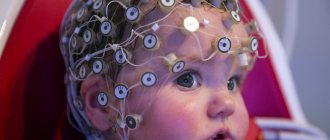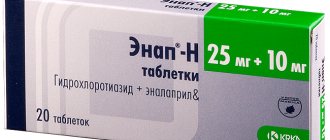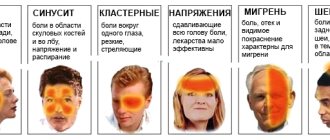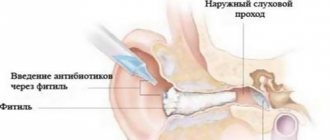Causes of head concussion
Trauma is a common cause of concussions.
A head concussion occurs as a result of an accident: falling or hitting a hard object. This can happen at home, at work or while playing sports. By the way, you don’t have to hit your head to get injured: even in winter, if a person slips and falls on his buttocks, the shock wave can damage the brain. Sometimes a sudden movement is enough - a jerk forward or unexpected braking. This is possible when driving in transport. Road traffic accidents are the most common cause of head impacts. If we consider the phenomenon from the inside, then due to a sharp shake of the head, the brain is set in motion and then, by inertia, hits the skull.
The consolation is that such damage does not entail irreversible consequences and has virtually no complications. The danger of the condition lies in the possibility of damage to certain parts of the brain or rupture of intracranial blood vessels.
Symptoms of a concussion
Knowing the symptoms of traumatic brain injuries will help you provide first aid in a timely manner. Each person’s body reacts differently, so it is not necessary to have all the symptoms at once; several manifestations from the list are possible:
- Visible head injuries, nosebleeds
- Pale and cold skin, increased sweating, general weakness
- Severe headache, high fever
- Clouding of consciousness, loss of concentration and orientation in time and space
- Slowness of speech and movements, or vice versa - overexcitement and excessive activity
- Pain in the eyes, difficulty focusing
- Convulsions
- Unpleasant sensations from loud noises or bright lights
- Lack of appetite, nausea, vomiting. A distinctive sign of a concussion is a single vomiting; repetition of the symptom indicates a slight brain injury
- Severe fatigue
- Possible momentary loss of consciousness
From the length of time the victim spent unconscious and how quickly he returned to consciousness, we can draw a conclusion about the seriousness of his injury. There are three degrees of severity of concussions:
- 1st degree - slight fainting. After 15-20 minutes the person comes to his senses completely.
- Stage 2 - 20 minutes after fainting, the victim is still unconscious.
- 3rd degree - after fainting, the victim forgets some moments before the fall, and may not recognize others. The extreme degree is falling into a coma.
You need to be especially careful about head injuries in children, since the child may not develop symptoms immediately, but rather an hour after the blow. Therefore, if after a while the child becomes lethargic, vomiting appears, or there is disorientation in space, you need to urgently call an ambulance.
What causes symptoms such as: chills, noise in the head
Below are diseases that match your symptoms.
Angioma
Angioma is a benign neoplasm that develops from lymphatic or blood vessels (in the first case we are talking about lymphagioma, in the second - about hemangioma).
According to scientific research, this anomaly is an intermediate stage between a malformation and a tumor. Read more- poor coordination of movements
- bad memory
- speech disorder
- dizziness
- blurred vision
- vomit
- headache
- high blood pressure
- labored breathing
- spasm
- nausea
- difficulty swallowing
- sweating
- noise in the head
Paroxysmal tachycardia
Paroxysmal tachycardia is a type of arrhythmia manifested by paroxysms (attacks of palpitations with a heart rate of 140-220 or more beats/min).
It develops under the influence of ectopic impulses in the atria, ventricles or atrioventricular junction, provoking the replacement of normal sinus rhythm. Read more- bloating
- rapid pulse
- fainting
- loss of consciousness
- dizziness
- suffocation
- weakness
- nausea
- cardiopalmus
- sweating
- noise in the head
- feeling of heart squeezing
Endocarditis
Endocarditis is inflammation of the inner lining of the heart - the endocardium.
In most cases, endocarditis is not an independent disease, but is a partial manifestation of other diseases. Subacute bacterial endocarditis, most often caused by streptococcus, is of independent importance. Read more- poor appetite
- fever
- shortness of breath on exertion
- rash
- skin redness
- night sweats
- swollen ankle
- unusual color of urine
- fatigue
- weight loss
- pale skin
- chills
- cough
- dementia
- hot skin
- headache
- heart murmur
- hematuria
- joint pain
- labored breathing
- fatigue
- myalgia
- lack of appetite
- pain
- weakness
- nausea
- muscle weakness
- elevated temperature
- sweating
- muscle pain
- swelling of the legs
- cyanosis
- urine with blood
- enlarged spleen
- abdominal swelling
Anemia (low hemoglobin)
Anemia is a health problem in which the level of hemoglobin in the blood decreases.
Most often, the number of red blood cells decreases in parallel. Popularly, this pathology is also called “anemia.” Read more- poor appetite
- bad memory
- dyspnea
- drowsiness
- rapid pulse
- swallowing disorder
- fainting
- tachycardia
- difficulty urinating
- dark urine
- dizziness
- blurred vision
- pale skin
- cold sweat
- dry skin
- gait disturbance
- bleeding gums
- jaundice
- fatigue
- bad nails
- weakness
- nausea
- cardiopalmus
- elevated temperature
- sweating
- involuntary urination
- low body temperature
- feeling of lack of air
- brittle nails
- migraine
- noise in ears
- swelling of the legs
- noise in the head
- heart failure
- peeling nails
- hair splits
- dark chair
Infective endocarditis
Infective endocarditis is an infection of the heart valves or endocardium. The disease can lead to stroke and heart failure.
- poor appetite
- fever
- shortness of breath on exertion
- dyspnea
- night sweats
- swollen ankle
- swollen stomach
- a sore throat
- unusual color of urine
- vomit
- fatigue
- weight loss
- back pain
- pale skin
- chest pain
- chills
- cough
- hot skin
- heart murmur
- hematuria
- joint pain
- fatigue
- myalgia
- bad nails
- weakness
- nausea
- red rash
- elevated temperature
- sweating
- urine with blood
Whipple's disease
Whipple's disease is a fairly rare form of systemic disease.
It is caused by the bacterium Tropheryma whippelii, and therefore is classified as infectious. The lymphatic system of the synovial membranes of the joints and small intestine is mainly affected. Read more- poor appetite
- bad memory
- fever
- peeling skin
- skin redness
- insomnia
- dyspnea
- speech disorder
- swelling due to excess fluid
- swollen lymph nodes
- tongue swelling
- abdominal pain
- vomit
- watery stool
- fatigue
- weight loss
- pale skin
- chills
- chronic pain
- cough
- dry skin
- gray skin
- heart murmur
- gastrointestinal bleeding
- joint pain
- fatigue
- low blood pressure
- memory loss
- confusion
- lack of appetite
- numbness
- disorientation
- nausea
- muscle weakness
- diarrhea
- elevated temperature
- muscle pain
- heart failure
- chronic cough
- skin thickening
- pain in the navel area
Pediculosis
Pediculosis is a disease caused by small lice that parasitize human hair and skin.
At the sites of lice bites, a person feels severe itching. The danger of this disease is determined by the fact that lice can be carriers of diseases such as relapsing and typhus, Volyn fever, etc. If an infection occurs, for example, staphylococcal, pyoderma - purulent blisters - will form in the areas of scratching. Read more- itchy scalp
- itchy skin
- rash
- irritability
- itching
- skin rashes
- sleep disturbance
- itchy rash
Psoriasis
Psoriasis, scaly lichen, is a chronic non-infectious disease, dermatosis, mainly affecting the skin.
Currently, the autoimmune nature of this disease is assumed. Typically, psoriasis manifests itself in the formation of red, excessively dry, raised spots above the surface of the skin - the so-called papules, which merge with each other to form plaques. Read more- itchy scalp
- peeling skin
- itchy skin
- rash
- skin redness
- elevated temperature
Dandruff
Dandruff is a disease characterized by active flaking of the scalp.
Dandruff is most often observed on the scalp, which is covered with thick hair. Read more- itchy scalp
- dry hair
- dry skin
- hair loss
- brittle hair
- dull hair
- greasy hair
Hemolytic anemia
Red blood cells carry oxygen from the lungs to the rest of the body.
They are produced in the bone marrow. When the number of dying red blood cells exceeds the number of new ones produced by the bone marrow, hemolytic anemia occurs. Read more- fever
- dyspnea
- splenomegaly
- tachycardia
- abdominal pain
- dark urine
- dizziness
- fatigue
- pale skin
- chest pain
- chills
- headache
- heart murmur
- liver enlargement
- confusion
- spasm
- weakness
- cardiopalmus
- elevated temperature
- yellow skin
- enlarged spleen
Pneumonia
Pneumonia is an infection of the lungs caused by fungi, bacteria or viruses.
Common symptoms include chest pain, fever, cough and breathing problems. Read more- fever
- fast shallow breathing
- hiccups
- dyspnea
- drowsiness
- dizziness
- fatigue
- wheezing
- pale skin
- bloody sputum
- chest pain
- chills
- cough
- hot skin
- headache
- hemoptysis
- hyperventilation
- retraction of intercostal spaces
- labored breathing
- fatigue
- myalgia
- flaring nostrils
- lack of appetite
- pain
- painful breathing
- weakness
- elevated temperature
- low body temperature
- difficulty breathing
- respiratory failure
Flu
Influenza is an acute respiratory tract infection caused by the influenza virus.
Included in the group of acute respiratory viral infections (ARVI). Periodically spreads in the form of epidemics and pandemics. For many people, flu symptoms go away without medical attention within a week. However, the flu can lead to severe illness and death, and people at risk need to be especially careful about this disease. Read more- photophobia
- fever
- seizures
- stomach ache
- dyspnea
- sneeze
- stuffy nose
- taste disorder
- a sore throat
- vomit
- my eyes are watering
- fatigue
- wheezing
- woozy
- chills
- cough
- hot skin
- hallucinations
- headache
- high-pitched wheezing
- joint pain
- fatigue
- myalgia
- nasal discharge
- nosebleed
- bad feeling
- lack of appetite
- pain
- weakness
- elevated temperature
- sweating
- runny nose
- muscle pain
- aching joints
Pleurisy
Pleurisy is an inflammation of the pleural layers, with the deposition of fibrin on their surface (dry pleurisy) or the accumulation of exudate of a different nature in the pleural cavity (exudative pleurisy).
The same term denotes processes in the pleural cavity, accompanied by the accumulation of pathological effusion, when the inflammatory nature of pleural changes does not seem indisputable. Among its causes are infections, chest injuries, and tumors. Read more- poor appetite
- hoarse voice
- hiccups
- dyspnea
- rib pain
- bloating
- chest pain
- chills
- cough
- hot skin
- headache
- hemoptysis
- joint pain
- bad feeling
- pain
- painful breathing
- weakness
- elevated temperature
- sweating
- dry cough
- muscle pain
- sleep disturbance
- cyanosis
- shallow breathing
- heaviness in the chest
Piggy
Mumps or mumps is an infectious viral disease that most often affects the parotid lymph nodes.
It is caused by an RNA virus from the Paramyxoviridae family, which is transmitted by airborne droplets. Once in the upper respiratory tract, it begins to actively multiply. It then penetrates the bloodstream and spreads with the bloodstream throughout the body. Read more- poor appetite
- chills
- headache
- fatigue
- weakness
- nausea
- cardiopalmus
- elevated temperature
- sweating
- dry mouth
- muscle pain
- sleep disturbance
- ear pain when chewing
- ear pain when swallowing
- ear pain when talking
Sepsis
Sepsis is a life-threatening disease caused by the body's response to infection.
Sepsis occurs when chemicals released by the immune system into the bloodstream to fight infection cause inflammation throughout the body. Severe cases of sepsis can lead to septic shock, which requires emergency medical attention. Read more- poor appetite
- fever
- fast shallow breathing
- rash
- rapid pulse
- tachycardia
- tremor
- vomit
- chills
- decreased attention
- rave
- hot skin
- headache
- hyperventilation
- hypothermia
- heart rhythm disturbances
- irritability
- labored breathing
- apathy
- low blood pressure
- confusion
- oliguria
- weakness
- nausea
- diarrhea
- elevated temperature
- sweating
- yellow skin
- low body temperature
- breathing disorder
Salmonellosis
Salmonellosis is an acute intestinal infection of animals and humans caused by Salmonella; an acute infectious anthropozoonotic disease caused by Salmonella and characterized, in general, by the development of intoxication and damage to the gastrointestinal tract. The incubation period ranges from 6 hours to 3 days, averaging 12-24 hours.
- fever
- stomach ache
- abdominal pain
- vomit
- watery stool
- abdominal tenderness
- chills
- hot skin
- myalgia
- pain
- nausea
- diarrhea
- muscle pain
Herpes
Herpes, red, fluid-filled blisters that usually form near the mouth or other areas of the face, is a viral disease.
In severe cases of the disease, damage to the central nervous system may occur with the development of meningitis and encephalitis. Read more- fever
- sore in mouth
- swollen lymph nodes
- vesicles
- chills
- mouth ulcers
- weakness
- itching
- muscle pain
Encephalopathy
Dyscirculatory encephalopathy of the brain (DEP) is a disorder of vascular function; brain damage occurs due to insufficient nutrition.
The damage is chronic, it leads to a gradual disruption of brain function and diffuse changes in its structure. In neurology, DEP is a widespread disease. According to statistics, pathology is registered in 6% of the total population of Russia. The disease mainly affects older people, but today cases of DEP are increasingly being recorded under the age of 40 years. There is a risk of development in people who are more involved in mental work and TV Read more- poor coordination of movements
- bad memory
- insomnia
- speech disorder
- impaired concentration
- decreased attention
- depression
- headache
- fatigue
- apathy
- spasm
- difficulty swallowing
- hearing impairment
- decreased performance
- noise in ears
- trembling hands
Skin cancer
Skin cancer is a malignant tumor disease of the skin that occurs as a result of atypical cell transformation and is accompanied by large polymorphism.
Read more- fever
- itchy skin
- chills
- bad feeling
- weakness
- elevated temperature
- decreased immunity
Tuberculosis
Tuberculosis is a widespread infectious disease of humans and animals in the world, caused by various types of mycobacteria from the Mycobacterium tuberculosis complex group (M. tuberculosis and other closely related species) or otherwise Koch bacilli.
Tuberculosis usually affects the lungs, less often affecting other organs and systems. Mycobacterium tuberculosis is transmitted by airborne droplets when a patient talks, coughs or sneezes. Read more- poor appetite
- fever
- Strong headache
- dyspnea
- drowsiness
- stupor
- night sweats
- swollen lymph nodes
- abdominal pain
- unusual color of urine
- fatigue
- weight loss
- wheezing
- back pain
- pale skin
- bloody sputum
- chest pain
- chills
- cold sweat
- cough
- hot skin
- problems with conception
- gray skin
- headache
- hemoptysis
- joint pain
- fatigue
- stiffness of movement
- apathy
- lower back pain
- nightmares
- bad feeling
- lack of appetite
- pain
- painful breathing
- weakness
- poor posture
- elevated temperature
- inflammation of the lymph nodes
- sweating
- intoxication
- dry cough
- blood in stool
- sleep disturbance
- cough with sputum
- mood swings
- frequent fractures
Never rely solely on search results to make a diagnosis. Be sure to consult a board-certified physician for diagnosis and treatment.
Complications of concussion
The main symptoms of a concussion disappear 2-3 weeks after the injury, and the victim’s condition becomes noticeably better. If this does not happen, it means that more serious problems were not diagnosed in time: cerebral edema, bruise or hematoma. Then you need to urgently go to the hospital for clarification of the diagnosis and treatment.
After recovery, occasional headaches may continue. Therefore, you need to be observed by a therapist for about another year. In some cases, disorders of the nervous system can be detected 2-3 years after recovery. Headaches may be accompanied by irritability, anxiety, sleep disturbances, and inability to concentrate. In this case, you need to add pharmaceutical drugs to the treatment - painkillers, sleeping pills or sedatives. Drug treatment is prescribed only by a doctor.
With a normal concussion, serious consequences can occur if the first weeks after the impact are spent in motion rather than at rest. This is dangerous for the development of epilepsy or post-traumatic neurosis. In severe or advanced cases, neurosurgical intervention is possible.
Head concussion is dangerous in older people, causing vascular disease and increased blood pressure, which can lead to stroke or Alzheimer's disease. For this category of patients, additional therapy is prescribed.
Providing first aid to the victim
In case of a severe blow to the head, you should immediately call a doctor, and before his arrival, provide first aid to the victim yourself. What should be done:
In everyday life, many of us very often get bruises on certain parts of the body. Some of them are not considered too serious and dangerous, while others, on the contrary, raise quite serious concerns regarding the health of damaged organs and further consequences for the entire human body.
One of the most dangerous injuries is a head injury, especially when it comes to children. This injury is a mechanical closed injury to the skull, in which there are no obvious violations of the integrity of the skin. The most common causes of head injury in medical practice are falls or blows to the head with blunt objects.
Causes of chills and headaches
If you have a severe headache and chills, this is a clear reason to pay attention to finding the cause of the ailment. The fact is that a feverish state, accompanied by pain in the head, can be provoked by both physiological and pathological factors. Here are non-medical causes of headaches and chills:
Hypothermia
If you happened to be frozen the day before, subsequent manifestations in the form of chills and headaches are normal. You need to cover yourself with a blanket and put on as many warm clothes as possible. If there is no opportunity to change clothes, the problem can be solved with the help of hot drinks - tea, mulled wine without alcohol, fruit drink, coffee, cocoa, herbal decoction.
Stress and emotional overexcitement
In this case, chills and headaches occur in the form of attacks and pretty much ruin the patient’s life. You can get rid of the unpleasant condition by taking sedatives based on herbs, for example, valerian, motherwort, hawthorn. In a number of situations, your well-being can be improved with the help of breathing practices.
Increased blood pressure
If the pressure fluctuates and is not stable, there is a possibility of not only the manifestation of chills and headaches, but also the subsequent development of hypertension, which, in the absence of adequate therapy, can provoke a stroke, heart attack, or hypertensive crisis. In this regard, if the pressure increases and the indicators deviate excessively from the norm, you should undergo examination and treatment.
Menopause
Symptoms characteristic of this condition include chills. Menopausal syndrome can manifest itself as a feeling of trembling from the cold, hot flashes.
If there is a clear disruption of the menstrual cycle, increased irritability, excessive sweating, then menopause will not be long in coming. To reduce symptoms and improve overall well-being, you need to consult a doctor who will prescribe gentle medications.
Pathologies
Here is a list of pathologies that cause these unpleasant sensations:
- Disturbances in hormonal balance. Impaired functioning of the thyroid gland, adrenal glands and other organs that produce vital hormones also leads to chills. If this phenomenon is regular, it is worth excluding hormonal pathologies by visiting the appropriate doctors, and if they are detected, undergo the appropriate course of treatment.
- Intoxication. Accompanied by chills and poisoning. In this case, the temperature may rise by several degrees, nausea and digestive system disorders may appear. To relieve symptoms and improve overall health, you need to take absorbent medications that will help remove toxins from the body.
- Classic cold. A cold usually manifests itself as a complex of symptoms. These include fever, sore throat, runny nose, and aching joints. Chills and headaches may occur later, but this does not always happen. If chills continue for a long time, this may indicate the development of an inflammatory process.
- Raynaud's syndrome. Sometimes the temperature rises sharply against its background, sometimes it passes without fever. But there is a set of signs that contribute to its prompt recognition: chills accompanied by pain in the fingers. In fact, the disease seriously affects the blood vessels, which leads to their spasm. Despite the fact that this pathology is safe for life, it greatly worsens its quality. A heating pad or injection of vasodilators will help cope with discomfort.
- Malaria. If symptoms appear while traveling to exotic lands and countries, you should pay attention to such a dangerous disease as malaria. As it progresses, a person may experience severe headaches, weakness, and insomnia. To identify the disease, you must urgently see a doctor by going to the nearest clinic.
- Diseases of the ENT organs. Symptoms of the development of infection in the body can indicate not only pneumonia, meningitis, tuberculosis, but also less dangerous diseases. For example, the flu. As it progresses, pain in the throat and head, runny nose, and cough occurs.
- Problems with cerebral vessels. Most often in this situation we are talking about arterial hypertension, a hypotensive state, and atherosclerosis. Blood pressure levels fluctuate, and this, in turn, entails the appearance of headaches, chills, and general weakness.
- A brain tumor is another condition that can give rise to the complex of symptoms described above. Benign and malignant neoplasms lead to compression of tissues and blood vessels, which causes cephalalgia, weakness, and in some cases, chills and fever.
These are the most common physiological and pathological causes of chills and headaches. To determine them, specialized medical examinations are used.
What symptoms are observed?
The severity of symptoms depends on the severity of the injury and the extent of its location. Head injury causes the following symptoms:
- pain as a result of vascular spasm;
- local manifestation of a bruise is expressed in the form of a swelling or lump;
- the appearance of hemorrhage or bruising;
- possible short-term increase in temperature immediately after injury;
- nose bleed;
- Often a bruise in the occipital area of the head is accompanied by impaired visual acuity, since this is where the nerve endings responsible for this function are concentrated;
- Manifestations of weakness in the limbs and general weakness may occur;
- confusion or complete loss of consciousness;
- nausea and vomiting can occur when the bones of the skull are injured, which are often the consequences of severe head contusions;
Particular attention should be paid to injury if it has consequences such as loss of consciousness, weakness and nausea, blurred vision and increasing pain. These symptoms may indicate various serious complications and should be a signal for urgent hospitalization
to make a final diagnosis, after which the optimal treatment can be prescribed.
Head injuries, especially if they are accompanied by an eye injury, must be examined by a specialist, regardless of the severity.
Pathological manifestations
Headache, like chills, is a symptom of numerous diseases. Painful sensations arise from pressure on nerve endings concentrated around the brain. The brain itself does not contain nerve endings and cannot hurt. Most often, pain is provoked by edema, sclerotic plaques or vascular spasms.
The causes of headaches are no less varied than the causes of chills. It’s no wonder that headaches and chills often occur at the same time. They can be divided into 3 categories.
- Headache due to viral infections. Most often it is localized in the forehead area. Before the flu, a person first experiences an increase in strength and a good mood. Then my forehead starts to hurt. The pain may spread to the eyes and temples. It is often accompanied by pressing sensations. A person feels relief only when other symptoms appear: fever and signs of ARVI.
- Painful sensations of a vascular nature. Usually the pain is localized in the temples, on the back of the head or on the top of the head. It can be generated by hormonal surges, stress, and exacerbation of osteochondrosis.
- Prolonged pain accompanying chronic diseases of other organs. Often headaches occur with diseases of the kidneys, joints, respiratory system and other cases. Pain can be caused by general intoxication and hormonal imbalance.
- Severe and prolonged headaches often appear from problems arising in the head itself. These may be inflammatory processes in the arachnoid membrane of the brain, in the middle ear, etc.
We can write at length about the causes of headaches, but we are interested in something else: why chills and pain in the head are combined.
What should be the first steps?
In case of a head injury, it is recommended to do the following procedures:
- Applying cold to the site of the injury will help relieve pain, swelling and significantly reduce the degree of hemorrhage. Usually this procedure must be done over several hours.
- Place the victim in bed for 1-2 hours. This will help prevent you from falling again as a result of dizziness and weakness.
- Go to an emergency room or hospital to have the patient examined by a doctor.
- Do not allow the victim to drink water, eat food or take any medications for several hours after the incident.
If, as a result of the injury, the soft tissues of the head, for example, the face, have been damaged, with the formation of abrasions and bruises that are caused by vascular damage, the following measures can be taken as part of first aid:
- applying a pressure bandage;
- ice compresses during the first 24 hours after injury;
- on the second day, you can use alcohol compresses and heat, which will promote the resorption of hematomas.
First aid for a head injury can be provided to the victim by almost every person who happens to be close to the scene of the incident. However, the situation with specialized medical care is completely different. Only a specialist can provide professional treatment to the victim
based on a full examination.
The diagnosis in a case is made on the basis of an examination of the patient, palpation of the skull and skeleton of the facial part of the head, as well as the most effective and informative x-ray examination, which is usually prescribed in two projections.
Recommendations and appointments
Severe bruises that are accompanied by loss of consciousness, nausea and vomiting may indicate brain damage. In this case, it is necessary to ensure rest for the victim and immediately consult a doctor. Patients with these symptoms should not walk under any circumstances.
, especially on your own, since an attack of dizziness can provoke a repeated fall and more serious injury. It is clear that this could make the situation even worse.
Often, bruises, even without signs of open skin damage, can be accompanied by injury to other organs located directly in the facial part of the head. For example, this could be a bruise of the nose, in which there is a possibility of damage to the nasal septum. Such defects need to be corrected only surgically. If an injury to the nasal septum is left to chance and adequate treatment is not provided, it may heal incorrectly, which will cause difficulty in nasal breathing, etc.
A fairly complex concomitant injury is a fracture of the skull vault. This injury is difficult to determine and sometimes can only be detected using an x-ray. Fractures of the cranial bones are very serious injuries and require immediate transport of the patient to a medical facility.
If we are talking about a bruise of the soft tissues of the head, then treatment, as a rule, is conservative. In case of formation of hematomas that are too large, it is advisable to puncture them using a thick needle through which the blood is suctioned. This procedure ends with the application of a sterile pressure bandage.
In general terms, after diagnosis, the patient’s behavior can be characterized as follows:
- ensuring complete rest, especially during the first few days after injury;
- Impeccable adherence to all recommendations of the attending physician and use of all prescribed remedies;
- refusal or limitation of serious physical activity for some time after injury;
- maintaining a correct daily routine, especially if you have dealt with a concussion, which involves long walks in the fresh air, minimal time spent watching TV or at the computer.
Consequences of injury
If a child hits his head, in addition to bleeding, he may also experience the following symptoms:
- nausea;
- drowsiness;
- loss of appetite;
- headache.
The appearance of such symptoms should alert adults; they indicate the occurrence of neurological problems (concussion, hemorrhage). The child must be taken to see a specialist within 24 to 48 hours after he hits his head. The child must undergo a full examination, which includes:
- Magnetic resonance imaging.
- Ultrasonography.
- Computed tomography.
These diagnostic methods will help the doctor determine the degree of damage, create an appropriate course of treatment and rehabilitation.
What is the risk of damage?
Usually a head injury ends with a complete recovery. However, the outcome of a head injury can be various responses of the body, sometimes quite serious.
The healing process is especially slow for serious head injuries. The recovery process can take up to 5 years. A bruise even in early childhood can have unpleasant consequences at an older age, for example, at 40 years old or later.
The further outcome of the injury largely depends on the age of the patient. Thus, in elderly people, the prognosis for this diagnosis is not always favorable. The consequences of bruises in patients of this age category can last for many years. Sometimes serious head injuries can even cause disability
.
Post-traumatic manifestations in this case can be called;
- dizziness;
- headache;
- increased fatigue;
- memory impairment;
- poor general health and decreased mood.
Damage to the skull can result in serious disorders in the body and irreversible consequences. Take care of your head, since it is this part of the body that nature has entrusted with the most important functions to ensure your life.
Head contusions are injuries that most often result from a fall or blow from a blunt object. Often such injuries occur in young people.
Even when there are no symptoms, it is not recommended to ignore head injuries, since they can pose a danger to human health and life.
Injuries can cause a fracture of the base of the skull, concussion and other unpleasant complications, which is why it is necessary to know what to do in case of a head injury and, if necessary, provide first aid.
Chills at fever: causes of the symptom
Today we will talk about chills with fever. How does it manifest itself and why? Occurs due to spasms in the blood vessels that are located on the surface of the skin. Then a feeling of cold appears, and muscle tremors are also felt. In most cases, such symptoms portend a fever, which occurs due to an infectious disease.
In addition, during a cold or flu, if you notice fever, chills, muscle pain, and headache, this indicates that there is intoxication in the body. Then the patient, in addition to the pills, is prescribed plenty of fluids.
Chills at high temperatures occur as a result of pathogenic viruses and microbes entering the body. To counter them, defensive reactions are activated, which cause a feverish state. Thanks to spasms, heat transfer externally decreases, but internally, on the contrary, increases. This makes it possible to fight the infection on your own. At the same time, the sick person feels overwhelmed and weak.
Such a reaction of the body can be a sign of various diseases. Chills when your temperature rises is a sign that something is wrong in your body. Perhaps it is ARVI, but cough and runny nose appear much later.
The cause may be an infectious disease, but the temperature, as in the first case, will appear a little later, and only then other signs of the disease.
It happens that you clearly feel chills, and there seems to be a temperature, but in fact it is a sharp jump in pressure, regardless of whether it jumped down or up.
Causes of chills
You may also feel chills after a psycho-emotional disorder, which tends to occur during a stressful situation, due to overwork or excitement, even from lack of sleep.
This condition can often occur in lovers of different diets. As a result of a slowdown in metabolism, chills appear, and sometimes along with fever.
A fever can be triggered by prolonged exposure to cold or sun. This will be followed by hypothermia or overheating.
Chills may occur due to an injury followed by shock.
Medical experts warn that fever is not always associated with colds.
This can happen when the thyroid gland is not working properly. In addition to chills, almost the same symptoms as a cold are present: fever, lethargy and fatigue.
Shivering may occur due to hormonal imbalance and subsequent diseases, such as diabetes.
Reasons for women
— The first is the emotional side, since the fair half of humanity is much more impressionable than the male half. Even with the slightest excitement, fever, chills, and headache may appear.
— Secondly, in older women during menopause, hot flashes of chills and fever alternate. In their case, it is best to seek advice from a gynecologist or endocrinologist.
— This often happens during the menstrual cycle, especially in the first days.
Classification
The injury can be open, that is, damage to the skin is observed, and blood vessels are also affected. If the injury is penetrating, then the dura mater of the brain is affected, sometimes a fracture of the base of the skull is diagnosed - one of the most dangerous injuries.
With closed injuries, the skin is not injured. The following groups of brain damage have been identified:
- A concussion is a mild degree of traumatic brain injury, the manifestations of which disappear after a few days, there are no symptoms of vascular damage, and functional disorders are reversible. A bruise is a more severe injury and may cause brain damage. Manifested by such symptoms as nausea, vomiting, pale skin, tissue swelling, pain.
- compression of the affected area of the brain (foreign object, hematoma, air, bone fragment);
- hemorrhage in the subarachnoid space (the cavity between the arachnoid and pia mater);
- diffuse damage.
A severe brain contusion can result from a combined injury.
With a head injury, there are 2 types of bruises:
- Brain contusion.
- Contusion of the soft tissues of the head.
Sometimes the injury is accompanied by hemorrhage. This is often accompanied by fractures of the bone tissue of the skull.
Types of damage are identified depending on location:
- contusion of the back of the head;
- damage to the temporal region;
- bruise of the frontal part of the head;
- damage to the parietal lobe.
Changes that occur in the brain as a result of a bruise are divided into primary and secondary. Primary ones are caused by the injury itself, and secondary ones are caused by deterioration of tissue nutrition and increased intracranial pressure, the appearance of edema, and hematomas.
In case of serious injuries, contusion of several areas of the brain is sometimes diagnosed.
When a child bruises the soft tissues of the head, a lump appears. However, as a result of the blow, brain injuries are also possible, the consequences of which can appear in adulthood, after 40 years or later. Therefore, even if a lump simply appears after a blow, it is recommended to seek medical help.
Diseases that cause headache and chills
Have you been trying to heal your JOINTS for many years?
Head of the Institute for the Treatment of Joints: “You will be amazed at how easy it is to cure your joints by taking the product every day for 147 rubles ...
Read more "
Chills are an internal feeling of cold that appears regardless of weather conditions. This condition lasts from 2-3 hours to several days and is accompanied by trembling of the whole body, pallor of the skin, and weakness. Common causes of such symptoms include the following:
- Infectious ailments such as colds, flu, sore throat. The pain syndrome in such pathologies is localized in the forehead and can spread to the eyes and temporal region. The disease is accompanied by the following symptoms: chills, high body temperature, sore throat, nausea, loss of appetite. With angina, the lymph nodes are slightly enlarged. The appearance of body aches indicates that the virus has entered the internal organs, which is not necessarily accompanied by fever. Pneumonia is also a serious infectious illness that manifests itself in the form of goosebumps and cold sweat.
- Meningitis. The symptoms of this dangerous brain disease are similar to the common flu. Headache and chills appear, which, as a rule, become more intense in bright light, external irritants, and are aggravated by vomiting and weakness, cramps of the limbs, and loss of consciousness.
- Parasites and helminths provoke metabolic disorders in the body. As a result, symptoms of viral diseases occur, including general malaise and feverish trembling.
- In case of poisoning with poor-quality food, poisonous gases, or toxic substances, body aches, vomiting, weakness, cephalalgia and chills are observed.
- Mental disorders can cause fever, dizziness, pain in different parts of the body, aching joints, disturbances in the functioning of various organs and weakness. Nervous tremors usually appear in overly impressionable people when they are frightened or excited.
- Diseases of joints and muscles. Rheumatoid arthritis, psoriasis and their relapse can lead to a feeling of heat throughout the body, shortness of breath, and painful trembling.
- Brain tumors . The presence of chills, weakness, dizziness, cephalalgia and loss of coordination indicates the appearance of neoplasms in the main organ of the central nervous system.
- Weak immunity . People infected with HIV constantly suffer from body tremors. A decrease in the body's defenses occurs in people who are on a diet for a long time, exposed to hypothermia or overheating, alcohol or other intoxication, and also experiencing chronic stress.
- Vascular diseases such as vegetative-vascular dystonia, sclerotic plaques. With such ailments, numbness of the limbs occurs, caused by poor circulation.
- Malfunction of the hormonal system . A feeling of cold when the room is warm can occur in women during menopause. If a person freezes even in the heat, it means that thermoregulation in the body, for which the thyroid gland is responsible, is impaired. In this case, the tendency to colds increases, brittle hair and dry skin are observed.
- Diabetes . Hypoglycemic conditions in this disease are usually accompanied by sensations of hot and cold that occur alternately.
- Thermoneurosis is one of the forms of vegetative-vascular dystonia, in which the symptoms are similar to those of ARVI. High fever, goose bumps and headache are felt almost constantly, but further development of the disease does not occur. This state is typical for an overly emotional person who has psychological problems.
The feeling of cold can be caused by other factors:
- heat stroke;
- painful shock due to organ damage;
- changes in blood pressure.
Symptoms
What can happen to the brain after a stroke? The brain, by inertia, sharply shifts in the opposite direction, so it is damaged not only at the site of the impact, but also on the opposite side, this causes vascular spasms and swelling. Due to edema, intracranial pressure increases.
A severe head injury is often accompanied by fractures of the skull bones, which worsen the person’s condition; the risk of developing an infection in the affected area also increases. In any case, you should consult a doctor immediately.
Symptoms of a head injury are determined by the location and force of the blow:
- A mild bruise is characterized by pain that subsides after a few hours. When the subcutaneous vessels are damaged, a hematoma forms. The victim complains of constant drowsiness, double vision and darkening of the eyes, and sometimes fainting occurs. Symptoms disappear after a few weeks;
- moderate injuries are accompanied by prolonged fainting (several hours), severe headaches, inhibited reactions and impaired awareness of what is happening. Speech is unclear and slow;
- for fractures of the skull bones, the main clinical symptoms are dizziness, vomiting, and nosebleeds;
- contusion of the back of the head is manifested by blurred vision, dizziness, loss of consciousness and general weakness.
In case of serious injury, patients are unconscious for a long time (up to several days), and coma may occur. There is a disturbance in speech, breathing and swallowing, and the pupils may vary in size. Partial or complete memory loss cannot be ruled out.
First aid
If a person has a headache and is freezing, he should be given first aid. But first you should pay attention to the following signs:
- are there any blue discoloration of the nails and lips;
- is there any paleness of the skin;
- whether the temperature readings are elevated;
- is there general weakness, pain, malaise;
- Are your movements constrained?
- Is there any lethargy?
- are there any coordination problems or hallucinations?
- Are there any deviations in blood pressure from the norm?
If someone close to you has severe chills and these signs are observed, you should immediately consult a doctor. In case of mild discomfort, emergency assistance should be provided. It consists of the following measures:
- Drinking heavily is the enemy of many pathologies. Warm tea with honey, green or black, chamomile tea, warmed milk - all this will relieve spasms, disperse blood and reduce pain. To achieve an increase in the overall tone of the body, you need to take a small amount of ascorbic acid. This will also strengthen the body's defenses.
- In the absence of elevated temperature and other contraindications, a hot bath is recommended, which will help warm up the body and relieve tension. To enhance the effect, pine extract, soda, and sea salt are added.
- If a patient suffers from feverish tremors caused by stress factors, it is necessary to offer him tinctures of medicinal plants - valerian, peony, motherwort.
- If fever is accompanied by edema, you should take a decoction of dill seeds and a tincture of birch leaves.
- In case of intoxication, products based on absorbent substances, for example, activated carbon, rehydron, help achieve the optimal effect. They help restore water-salt balance and remove toxic substances.
- If your health suddenly becomes worse, let’s take a painkiller that will help relieve symptoms and eliminate high fever.
Before taking any measures, the causes of the observed violations should be established. The choice of funds depends on them.
First aid for head injury
For a head injury, first aid consists of the following:
- put cold on the site of the impact, this will make it possible to reduce pain and swelling, keep it for several hours, but avoid hypothermia.
- the victim must be laid on a horizontal surface, which will make it possible to avoid another fall due to weakness and dizziness;
- regardless of the severity of the condition, take the victim to the hospital or call an ambulance; exclude intake of water, food and medications;
- in case of hematoma, apply a compressive bandage;
- Warming compresses with alcohol can only be used after a few days.
First aid for a head injury can be provided by anyone, but qualified medical assistance will still be required.
If a child suffers a head injury, first aid must be provided; it must also be taken into account that the symptoms in children may not appear as pronounced as in adults.
Treatment methods
In case of a mild concussion, the patient is advised to rest in bed. If you hit the back of your head or any other part of your head, the first thing to do is call an ambulance. The doctor will assess the severity of the condition and, if necessary, carry out rehabilitation measures, which include:
- Tracheal intubation.
- Air duct insertion.
- Connection to a ventilator.
- Administration of plasma replacement solutions (Polyglukin, Rotsdex, Reogluman).
- Dehydration therapy (Lasix, Hydrocortisone, Prednisolone).
If necessary, surgical intervention is performed, during which intracerebral and meningeal hematomas are removed and impaired blood flow is restored.
Treatment
Some people self-medicate for a head injury, which is not recommended, especially if there is even the slightest suspicion of a concussion or hemorrhage. How to treat a head injury is determined by the doctor; the methods depend on the nature of the injury and its location.
Drug treatment
Medicines are prescribed to reduce symptoms:
- analgesics – to reduce pain;
- medications to regulate the functioning of the autonomic nervous system;
- sleeping pills to normalize sleep;
- nootropic drugs are prescribed to prevent complications, as well as to restore brain function;
- diuretics;
- anticonvulsants - prescribed in more severe cases in the presence of seizures.
For topical use, ointments are used that have a strengthening effect on blood vessels, relieve swelling and help eliminate hematomas. During the rehabilitation period after injury, doctors prescribe physiotherapeutic measures.
A specialist will tell you how to treat a bruise at home. For this, compresses made from tincture of ginseng, lemongrass, and eleutherococcus are recommended.
Surgical intervention
In severe cases, surgical treatment is indicated, for example, for a head injury from a fall, if it is accompanied by damage to the integrity of the brain structures.
Most often, operations are prescribed for damage to the temporal and frontal lobes of the brain. Craniotomy is performed by drilling a hole through which dead tissue is removed. During the postoperative period, the patient should be under the supervision of doctors.
In case of a head injury due to a fall, treatment is prescribed based on the diagnosis. If the injury is not dangerous, then the following recommendations must be followed:
- bed rest for several days;
- adhere to the instructions of the treating specialist and ensure that you take prescribed medications;
- during the rehabilitation period, exclude physical activity;
- if the left side of the brain is injured, then it is better to lie on the right side, and vice versa;
- during the recovery period, it is better to avoid using gadgets and TV or limit such leisure activities to a minimum;
- Long walks in the fresh air are necessary.
If the back of the head is bruised, bruises and bumps also cannot be ignored, especially if unpleasant symptoms appear. In such cases, you should immediately consult a doctor to avoid unpleasant complications.
Chills, nausea, weakness: causes, what diseases have such symptoms
Weakness, nausea, sometimes vomiting, chills without or with fever are a set of symptoms that indicate the presence of the disease.
Many diseases fit the listed symptoms. It will not be possible to say definitively without additional examination. It's definitely time to pay attention to your health. Manifestations reduce performance and interfere with normal life activities. To treat symptoms, traditional methods and medications are used. Those who suffer from the listed manifestations experience additional unpleasant signs of illness: dizziness, diarrhea, headache, increased intracranial pressure, low or high blood pressure. Unpleasant symptoms can occur in adults and children.
Causes of symptoms
The source of unpleasant symptoms can be internal and external factors.
Internal include:
- A brain tumor.
- Poisoning of the body.
- A disease associated with infection.
- Blood pressure surges.
- Disturbances in the functioning of the vascular system of the brain.
To external:
- Frequent lack of sleep.
- Stressful situations.
- Chronic fatigue.
Possible diseases
Before treatment, an accurate diagnosis must be made. The severity of the disease depends on the number of unpleasant symptoms and their intensity. But, despite the fact that the diagnosis must be made by a specialist, every person can learn to understand their condition and provide self-help.
- Nausea and vomiting are often signs of food intoxication. Poisoning is characterized by fever, heaviness in the stomach and abdominal pain, weakness and chills. You can get rid of the listed symptoms at home, if we are not talking about poisoning with chemicals. It is worth self-medicating only when the patient is absolutely sure that poisoning has occurred. Diarrhea is another sign of intoxication. If there is no symptom, then we are talking about an allergic reaction, heat stroke, sunstroke.
- Symptoms may appear during ARVI. Chills with weakness and nausea are the initial signs. The human body aches, freezes and shakes, feels dizzy and hurts. In children, ARVI can occur in different ways. To the listed features is added a lack of appetite, diarrhea, and heavy breathing. Almost all diseases of the infectious spectrum cannot occur without elevated temperature. High fever, fever, headache, accompanied by dizziness and vomiting may occur.
- VSV (vegetative-vascular dystonia) is a common diagnosis, manifested by weakness, sweating, headache, and dizziness. VSD sufferers often complain of too low or high blood pressure. VSD is not considered a disease - a set of symptoms. More often, the basis of symptoms is four components: problems with the cardio-system, vascular and neuralgic diseases, problems of a psychological nature.
- A panic attack is a psychological disorder that often affects young people. The following signs are typical for an attack: weakness, lump in the throat, fever, shortness of breath, dizziness, the person is chilling and nauseous. There is an added feeling of fear and anxiety.
Only common diseases are described here. To find out an accurate diagnosis, you should contact your doctor, who will diagnose and prescribe treatment.
What to do
Eliminate symptoms through an integrated approach, including treatment with medications, traditional methods and dietary changes.
Conservative treatment
The prescription of medications depends on the diagnosis. Diagnosis is carried out through a doctor.
In case of food poisoning, activated carbon and rehydron are prescribed. The first remedy is taken after vomiting, when the stomach is washed and the symptoms of poisoning have subsided.
Activated charcoal is taken when a person has loose stools. Regidron is also prescribed for poisoning to restore the body's water balance.
After consuming the drug, the patient will no longer feel nausea and the urge to vomit will subside.
Paracetamol is prescribed for infectious diseases. This drug helps when there is a high temperature, which may be accompanied by fever with chills. Paracetamol should not be used by pregnant women, alcohol abusers, or those with liver and kidney diseases.
Diprazine is prescribed as a drug that calms the human nervous system and enhances the effect of painkillers. It has contraindications similar to the previous drug.
“Star” is a balm used for respiratory diseases, headaches, and chills. Helps eliminate nausea and normalize blood flow.
For hypotension, take askofen, citramon and other drugs containing caffeine - it helps to increase blood pressure.
Traditional methods
A simple way to get rid of nausea and chills is to drink tea with lemon or raspberries. The method will improve your well-being, depending on the cause of the symptoms. More often, this method is used when overwork or nervous tension occurs.
If chills, nausea and weakness are caused by a stressful situation, tea made from lemon balm, mint, chamomile or sage will help. For nausea, chew cardamom grains, you can drink lemon water with honey, or a drink with ginger.
To lower the temperature and eliminate chills with weakness, consume citrus fruits. Compresses are considered an effective remedy that lowers temperature and reduces pain. Apply an absorbent cloth soaked in a solution of water and vinegar to your forehead.
A normal pressure is considered to be 120 over 80 or 110 over 90. Exceeding the range indicates high blood pressure, and low blood pressure means low blood pressure. Weakness and chills are signs of low blood pressure.
For low blood pressure and weakness, drink black coffee, black strong tea, cocoa, and take a contrast shower.
For intracranial pressure, a sign of which is headache and weakness, you should drink tincture of hawthorn, eucalyptus, and valerian.
Nutrition
In addition to pills and traditional methods of treatment, you should pay attention to nutrition. Often, it is poor nutrition that causes unpleasant symptoms such as nausea and weakness. Any medication eliminates only the symptoms, but in order to completely get rid of the cause of the disease, you need to radically change your lifestyle and diet.
The first thing you should avoid is fried, fatty foods. Causes nausea after eating. Heavily carbonated, alcoholic, and energy drinks negatively affect the general condition of the stomach. Abuse of sweets, spicy foods, pickled and salted foods should be avoided.
It is worth giving preference to porridges cooked in water, milk, dairy products, vegetable soups, and low-fat meat broth. Drink freshly squeezed juices, eat fresh fruits.
The described diet is suitable after ARVI, when the stomach hurts, and for other diseases. The diet is preventative.
Prevention
To prevent weakness, chills, and nausea from recurring, follow the following preventive measures:
- Take days off (change your environment periodically, don’t get overtired).
- Take a contrast shower.
- Monitor your diet (follow the diet rules).
- Give up harmful habits (smoking, alcoholic drinks, drugs).
- Take time to walk outside.
- Periodically clean your home to prevent infectious diseases.
- Don't neglect your own hygiene.
- Monitor your health and undergo periodic examinations in the hospital.
- Exercise.
Practice, including a proper diet, traditional methods, and medications, will help solve the problem, get rid of unpleasant, disturbing symptoms, and return to the previous state.
Source: //GastroTract.ru/simptom/toshnit/oznob-toshnota-slabost.html











